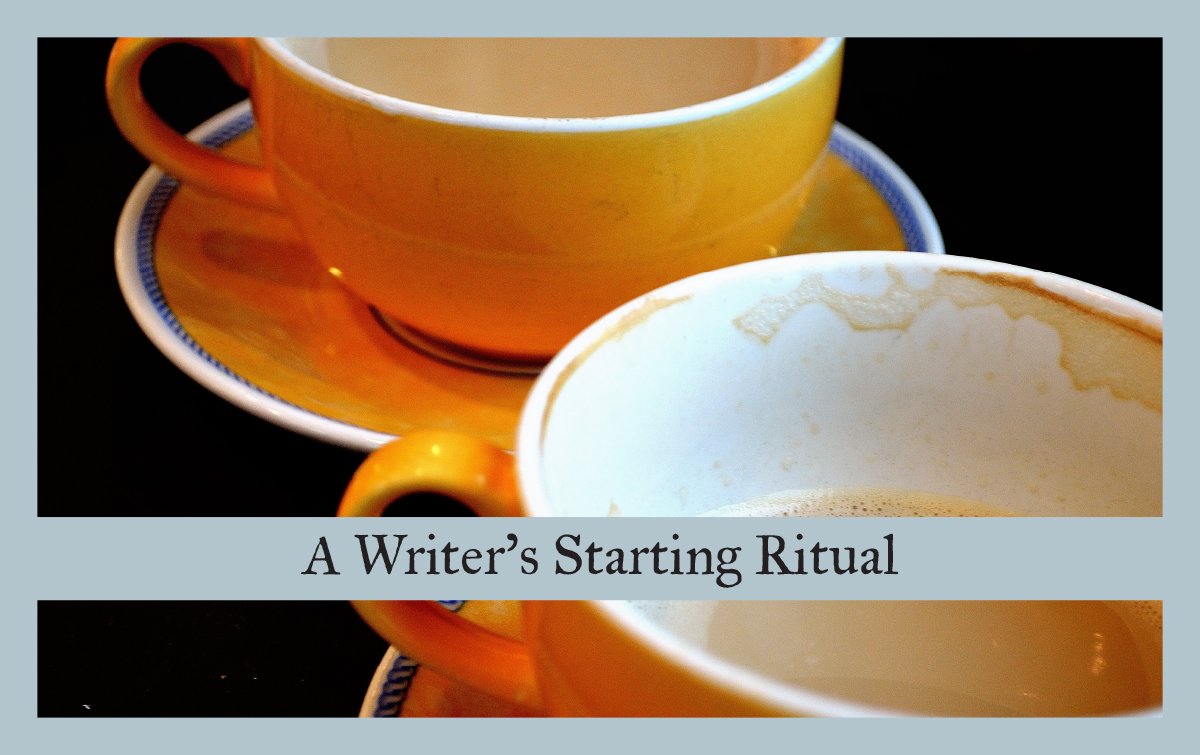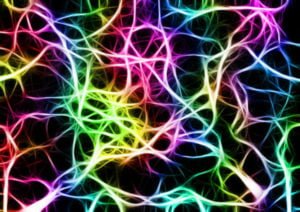
One of the best ways to help yourself write every day is to craft a starting ritual that you begin to use regularly and routinely. When your ritual becomes habitual, you will find yourself moving effortlessly from not writing to writing.
Whether you write first thing in the morning or at other times of the day, having a ritual to begin can ease you effortlessly into the work. Rituals can be simple or elaborate, can involve “props” or not, be location-dependent or not.
 The smell and taste of a single cup of special coffee might be enough to lead some minds into the right space. Some other simple rituals include the following:
James Joyce woke at 10am then enjoyed his coffee in bed. He lingered there in his thoughts until 11am.
Jane Austen rose before the other women in her household and played piano until 9am when she prepared the family breakfast. Afterwards, she stationed herself in the sitting room to write.
Virginia Wolfe took a morning walk before her writing.
Ernest Hemingway wrote standing up, and reportedly, sometimes in only his birthday suit.
The smell and taste of a single cup of special coffee might be enough to lead some minds into the right space. Some other simple rituals include the following:
James Joyce woke at 10am then enjoyed his coffee in bed. He lingered there in his thoughts until 11am.
Jane Austen rose before the other women in her household and played piano until 9am when she prepared the family breakfast. Afterwards, she stationed herself in the sitting room to write.
Virginia Wolfe took a morning walk before her writing.
Ernest Hemingway wrote standing up, and reportedly, sometimes in only his birthday suit.
 Other writers—like many sports fans—include clothing in their ritual; they may don a favorite fluffy bathrobe or a particular pair of socks. Some may have a certain way of sitting or must be in a particular space, such as in bed or at a picnic table, or in a particular place, such as a library or a park.
Some rituals involve a single thing, such as that cup of joe or pair of socks, and some are multi-layered. Writers with more complex preparations for writing included Dickens and Angelou.
Charles Dickens required absolute quiet. An extra door to his study was installed to block out noise. The room and every item on his desk had to be arranged precisely before he began to write.
Maya Angelou’s writing ritual involved leaving home. When she was working on a writing project, she went to a local hotel each morning around 6:30. She would write there until around 2pm.
My daily ritual is basically two, sometimes three stages pre-writing. I begin my day with “morning pages” as suggested by Julia Cameron. This free writing of three pages, followed by ten minutes of meditation puts me into a pensive and relaxed state that I need to work on my novel. Sometimes I will insert a short inspirational reading before the meditation when I am wrangling with an issue.
There is actually neuroscience behind the effectiveness of ritual. When we concurrently or sequentially practice two seemingly unrelated things, a connection is created. The neurons that fire when we behave or feel or move in a certain way become connected to the neurons that fire for that second behavior, feeling, or movement.
Other writers—like many sports fans—include clothing in their ritual; they may don a favorite fluffy bathrobe or a particular pair of socks. Some may have a certain way of sitting or must be in a particular space, such as in bed or at a picnic table, or in a particular place, such as a library or a park.
Some rituals involve a single thing, such as that cup of joe or pair of socks, and some are multi-layered. Writers with more complex preparations for writing included Dickens and Angelou.
Charles Dickens required absolute quiet. An extra door to his study was installed to block out noise. The room and every item on his desk had to be arranged precisely before he began to write.
Maya Angelou’s writing ritual involved leaving home. When she was working on a writing project, she went to a local hotel each morning around 6:30. She would write there until around 2pm.
My daily ritual is basically two, sometimes three stages pre-writing. I begin my day with “morning pages” as suggested by Julia Cameron. This free writing of three pages, followed by ten minutes of meditation puts me into a pensive and relaxed state that I need to work on my novel. Sometimes I will insert a short inspirational reading before the meditation when I am wrangling with an issue.
There is actually neuroscience behind the effectiveness of ritual. When we concurrently or sequentially practice two seemingly unrelated things, a connection is created. The neurons that fire when we behave or feel or move in a certain way become connected to the neurons that fire for that second behavior, feeling, or movement.
 Repetition strengthens the connection; repetition is key. Eventually, firing one set of neurons causes the others to fire. Just putting on the socks, or sitting in the special chair, or tasting and smelling the coffee can evoke the desire to write. Involvement of as many senses as possible strengthens the effectiveness of the ritual, too. In my morning pages ritual, it is not just the cognitive element of free-writing that puts me in the “mood” to write my novel. It is the feel of the mechanical pencil in my hand, the motion of my fingers as I slide the pencil, the scratch of the lead on the page. A brain-hand-page connection is created that then envelopes my heart. The movement, the touch, the sound evoke the feeling.
According to author Roseanne Bane, the more senses that are engaged in unusual ways, the more powerful, and the odder the ritual, the better. Rituals that involve unusual movement, unique smells, or anything else out of the commonplace and the everyday are believed to be the most effective. The brain pays attention to what is different from our ordinary, routine, and familiar.
Rituals can ease anxiety and slip us into automatic and decisive action—just what we need when we have a writing deadline or we simply want to finish chapter eight.
Do you have a starting ritual? Does it include props, a specific location, a certain order of things? It is a single thing or more? If you don’t have one but would like to, what would it be?
Repetition strengthens the connection; repetition is key. Eventually, firing one set of neurons causes the others to fire. Just putting on the socks, or sitting in the special chair, or tasting and smelling the coffee can evoke the desire to write. Involvement of as many senses as possible strengthens the effectiveness of the ritual, too. In my morning pages ritual, it is not just the cognitive element of free-writing that puts me in the “mood” to write my novel. It is the feel of the mechanical pencil in my hand, the motion of my fingers as I slide the pencil, the scratch of the lead on the page. A brain-hand-page connection is created that then envelopes my heart. The movement, the touch, the sound evoke the feeling.
According to author Roseanne Bane, the more senses that are engaged in unusual ways, the more powerful, and the odder the ritual, the better. Rituals that involve unusual movement, unique smells, or anything else out of the commonplace and the everyday are believed to be the most effective. The brain pays attention to what is different from our ordinary, routine, and familiar.
Rituals can ease anxiety and slip us into automatic and decisive action—just what we need when we have a writing deadline or we simply want to finish chapter eight.
Do you have a starting ritual? Does it include props, a specific location, a certain order of things? It is a single thing or more? If you don’t have one but would like to, what would it be?
This creativity tip is inspired by and loosely based on The 97 Best Creativity Tips Ever! by Dr. Eric Maisel (2011), and is used with his permission.

Gina Edwards is a retreat leader, a certified creativity coach, and a book editor. She is also a writer, so she’s intimately familiar with the challenges and elation that come with being one.
She supports all writers—published and aspiring—who want to write as an act of courageous and necessary self-expression.
Walking the writer’s path hand-in-hand with her clients and students, she helps them establish a writing practice and define a creative life on their own terms.
